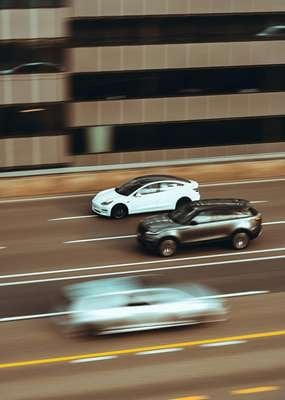Is your car too loud? New 'noise cameras' might catch you in the act!
By
Danielle F.
- Replies 37
The world is constantly changing. With it, the way we maintain law and order on the road has been evolving, too.
For those who remember the days when the only road rules to worry about were speed limits and stop signs, the latest development in traffic enforcement might come as a surprise.
In a bid to crack down on noisy vehicles and anti-social driving behaviour, a new trial would be launched in two NSW council areas before the end of the year.
Noise cameras are about to make their debut on NSW roads.
This initiative was a collaborative effort between the Environment Protection Agency (EPA), Transport for NSW, and the NSW Police.
It's a multi-agency push that's part of a broader strategy to ensure peace on the streets.
What exactly are noise cameras, and how do they work?
These devices are equipped with noise metres that could detect sounds exceeding a specific decibel limit.
They can detect sounds from a distance of about 15 metres.
If a vehicle is too loud, the camera may zoom in and capture the car's licence plate, potentially leading to a fine.
The technology has been tested in major cities around the world, including New York, Paris, and London.
However, it's a fresh approach for NSW, and the trial should start at the Bayside and Wollongong councils.
The goal is to evaluate the resources needed to use noise cameras for regulatory purposes in our state.
Residents like Heidi Lee Douglas from Kyeemagh have been vocal about the disruption caused by 'hooning' drivers.
'We get a huge amount of hoons coming in, driving around, doing laps, doing burnouts, doing anti-social behaviour, doing drag races,' Ms Douglas shared.
The community's frustration led to a petition that garnered over 2,500 signatures and saw Ms Douglas elected as a councillor for the Peaceful Bayside party.
Under the current NSW law, cars less than 20 years old must not exceed 90 decibels—roughly the noise level of a lawn mower.
Meanwhile, motorcycles less than 40 years old should be at most 94 decibels.
At the moment, fines of up to $600 could be issued to violators, but only if a noise reading was taken while the vehicle was stationary.
It has yet to be determined whether the laws would adapt to allow for noise camera readings of moving vehicles to enforce fines or if warnings should only be issued throughout the trial instead.
Wollongong councillor Richard Martin believed that fines are necessary to change driver behaviour.
With many residents complaining about noise, he hoped that the threat of a fine would act as a deterrent.
Four cameras have been purchased at an estimated cost of $50,000 each.
The locations for these cameras are still being planned, but they are mobile and can be moved around as needed.
Overseas, noise camera trials showed promising results.
New York started with a single camera and should deploy up to 100 cameras by 2028, with fines ranging from US$800 (A$1,160) to $US2,500 (A$3,600) for repeat offenders.
In London, the Royal Borough of Kensington and Chelsea issued 69 warnings and 163 fines throughout a three-month trial period.
If you're still hitting the road, it's time to be mindful of your vehicle's noise levels.
While we all appreciate a good engine's roar now and then, it's essential to respect our neighbours and fellow citizens by keeping the peace.

Do you think noise cameras will make a significant difference in curbing loud and disruptive driving? Share your opinions with us in the comments below.
For those who remember the days when the only road rules to worry about were speed limits and stop signs, the latest development in traffic enforcement might come as a surprise.
In a bid to crack down on noisy vehicles and anti-social driving behaviour, a new trial would be launched in two NSW council areas before the end of the year.
Noise cameras are about to make their debut on NSW roads.
This initiative was a collaborative effort between the Environment Protection Agency (EPA), Transport for NSW, and the NSW Police.
It's a multi-agency push that's part of a broader strategy to ensure peace on the streets.
What exactly are noise cameras, and how do they work?
These devices are equipped with noise metres that could detect sounds exceeding a specific decibel limit.
They can detect sounds from a distance of about 15 metres.
If a vehicle is too loud, the camera may zoom in and capture the car's licence plate, potentially leading to a fine.
The technology has been tested in major cities around the world, including New York, Paris, and London.
However, it's a fresh approach for NSW, and the trial should start at the Bayside and Wollongong councils.
The goal is to evaluate the resources needed to use noise cameras for regulatory purposes in our state.
Residents like Heidi Lee Douglas from Kyeemagh have been vocal about the disruption caused by 'hooning' drivers.
'We get a huge amount of hoons coming in, driving around, doing laps, doing burnouts, doing anti-social behaviour, doing drag races,' Ms Douglas shared.
The community's frustration led to a petition that garnered over 2,500 signatures and saw Ms Douglas elected as a councillor for the Peaceful Bayside party.
Under the current NSW law, cars less than 20 years old must not exceed 90 decibels—roughly the noise level of a lawn mower.
Meanwhile, motorcycles less than 40 years old should be at most 94 decibels.
At the moment, fines of up to $600 could be issued to violators, but only if a noise reading was taken while the vehicle was stationary.
It has yet to be determined whether the laws would adapt to allow for noise camera readings of moving vehicles to enforce fines or if warnings should only be issued throughout the trial instead.
Wollongong councillor Richard Martin believed that fines are necessary to change driver behaviour.
With many residents complaining about noise, he hoped that the threat of a fine would act as a deterrent.
Four cameras have been purchased at an estimated cost of $50,000 each.
The locations for these cameras are still being planned, but they are mobile and can be moved around as needed.
Overseas, noise camera trials showed promising results.
New York started with a single camera and should deploy up to 100 cameras by 2028, with fines ranging from US$800 (A$1,160) to $US2,500 (A$3,600) for repeat offenders.
In London, the Royal Borough of Kensington and Chelsea issued 69 warnings and 163 fines throughout a three-month trial period.
If you're still hitting the road, it's time to be mindful of your vehicle's noise levels.
While we all appreciate a good engine's roar now and then, it's essential to respect our neighbours and fellow citizens by keeping the peace.
Key Takeaways
- Noise cameras will be trialled in Bayside and Wollongong council areas in NSW to target noisy vehicles and anti-social behaviour on the roads.
- The technology, which involved noise metres and cameras to identify loud vehicles, was part of a multi-agency effort with the Environment Protection Agency (EPA), Transport for NSW, and NSW Police.
- Fines are currently in place for stationary vehicles exceeding noise limits, and the trial should assess how noise cameras can be used for regulatory purposes.
- Similar noise camera initiatives have been trialled in cities like New York and London, with varying levels of fines for offenders.








